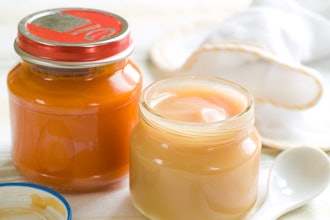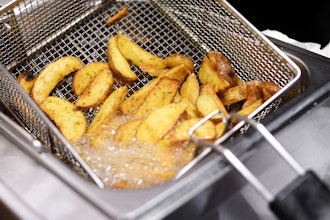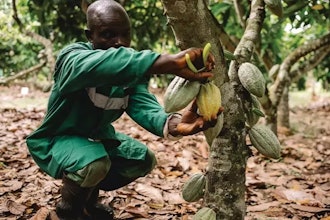LAS VEGAS (AP) — Don't be fooled by the electric green foliage and pungent scents at Ken Kesick's farm. It's not like most farms you've ever seen.
The basil and other greens that will soon be served on restaurant china are cropping up in a hostile, sagebrush-spangled desert where no more than 5 inches of rain fall each year. Instead of gently rolling fields, these crops are penned inside four walls, a floor and a roof.
Welcome to indoor agriculture, an industry that some see as vital for a growing world population, and one that Nevada views as an economic frontier.
"This is a segment we think has a lot of potential," said Bonnie Lind of the Nevada Governor's Office of Economic Development, which is in talks with 10 different agriculture-related businesses that are considering expanding or relocating in Nevada.
Couture crops like the micro arugula and micro basil at Kesick's Hydro Greens in Pahrump, or the mini cocktail cucumbers in Windset Farms' greenhouse in North Las Vegas, are helping to recapture some of an estimated $2 billion "leaked" annually from the state economy when Las Vegas' tourism industry imports food from other states and countries.
Nevada's existing half-billion-dollar agriculture industry includes only about 40 acres of crops cultivated indoors. The bulk of the ag industry is centered in the rural northern Nevada and is dominated by grazing.
State officials want to shift that balance to reduce the state's dependence on fickle tourism spending. Earlier this year, the economic development office co-sponsored its first indoor agriculture conference in Las Vegas that brought together about 250 scientists, farmers and entrepreneurs. Lind said a half-dozen prospects came from the conference or became more serious as a result. A similar conference is scheduled next spring.
Indoor agriculture also is a focus of Gov. Brian Sandoval's upcoming October trade mission to Israel, a hub of non-traditional farming techniques suited for the desert.
While the sector is robust in other countries including Japan and Canada, it's so small in the U.S. that the federal Department of Agriculture doesn't bother to give it a separate category in record-keeping. Experts say no one state has yet to corner the market.
If scientists in Nevada have their way, the state will become an intellectual hub for tackling larger questions about food security: What's the best way to feed a growing world population while water resources dwindle and soil is exhausted?
Navin Twarakavi, a soil researcher at Nevada's Desert Research Institute who is working to develop more efficient farming methods, said the answer is going indoors.
"It is not an economic option," he said. "It's a necessity."
Twarakavi deals in a world in which soil is a sideshow to techniques like hydroponics and aeroponics. Better known for its association with clandestine indoor marijuana grows, hydroponics involves growing crops directly in water, and its cousin, aeroponics, involves suspending plants in the air and misting their roots with a mineral-rich liquid solution.
Because they cut out the water lost through evaporation and seepage, the most finely tuned systems can whittle down water use to 7 percent to 15 percent of traditional methods. That's attractive in a region where officials are willing to pay billions to pipe in water from Ice Age aquifers along the Nevada-Utah border.
"Water is so stressed in southern Nevada that literally every drop is being fought for," Twarakavi said.
The region also has a robust culinary industry that needs enough food to supply 40 million hungry Las Vegas visitors each year.
Many of the businesses hoping to set up shop in the Silver State are attracted to Las Vegas' star-studded lineup of celebrity chefs, Lind said. If their niche product can win the endorsement of a big name, their business could multiply.
While indoor farms are immune outdoor blights including frosts and pests, they face other hurdles — not least among which is energy costs.
Glass-enclosed greenhouses often bring in too much of the blazing desert heat. Most indoor growing operations must turn to artificial lights and air conditioning to keep plants at optimal temperatures.
University of Arizona plant sciences professor Chieri Kubota says indoor farming is becoming more cost-effective, especially as improvements in LED light technology reduce lighting costs. She estimates that growing a head of lettuce indoors requires a 25-30 cents' worth of energy. If the lettuce sells for $1.30 a head, the farmer can make a profit, she said.
Beyond production costs, indoor farmers must struggle to sell to consumers who don't understand hydroponics.
"Customers aren't very educated," said Darcy Landis, a "forager" for Whole Foods in Nevada and Arizona. While they're looking for the "certified organic" label, they don't realize hydroponic crops "often go above and beyond the requirements of organics."
Others question whether the high tech methods produce the same taste — something that's up for debate and varies crop to crop.
"Are we doing everything we're doing in nature? Mostly no," Twarakavi said, pointing out that indoor systems don't always have the same makeup of beneficial microbes and fungi as nature does.
That can alter taste.
For Rick Moonen, the celebrity chef who owns sustainability-focused rm seafood at the Mandalay Bay hotel-casino, the stigma is intangible.
"I'd prefer something that came out of the ground," he said. "I like the smell of the dirt."
Experts don't believe indoor agriculture is a wholesale replacement for traditional methods. Some crops are easier grown indoors than others. A reasonable goal is for Nevada can produce a fraction — maybe a third — of the crop diversity needed for Nevada's broad palate.
While the state's incentives for indoor agriculture businesses are limited to standard tax abatement packages offered to all types of new or expanding businesses, Nevada officials are hoping to attract more farmers like Kesick. His 4-year-old Hydro Greens company supplies restaurants on and off the Strip, has expanded to 30,000 square feet and landed a partnership with Smith's stores this spring.
He's become a literal poster boy at the grocery store chain, where a large sign picturing him and his family hangs above the produce section under a mantra that's still elusive for many in southern Nevada:
"Smith's proudly supports local farmers."






















